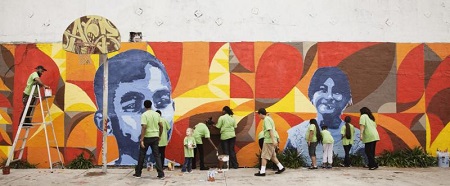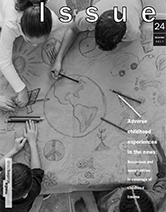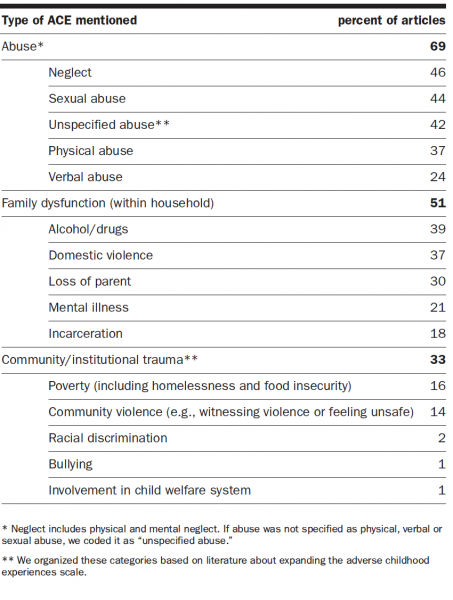
Update
ACEs in the News: How Can Advocates Communicate More Effectively About Childhood Trauma?
- Sarah Han
-
Focus Areas
Alcohol, Tobacco, Drugs & Mental Health, Women, Youth & Children -
Issues
Adverse Childhood Experiences, Violence Prevention -
Expertise
Media Advocacy & Communications -
Programs
Berkeley Media Studies Group

In the 1990s, researchers at the CDC and Kaiser Permanente conducted a pivotal study, which showed that adverse childhood experiences (ACEs)—stressful or traumatic events, such as abuse, divorce and neglect—are linked to a wide array of poor mental and physical health outcomes that persist well into adulthood. The more ACEs someone experienced as a child, the higher their risk for conditions like diabetes, cancer, substance abuse or suicide. The ACEs study introduced a groundbreaking new framework for understanding how children’s early experiences affect their health as adults, with profound implications for every sector in our society—especially those dealing directly with children and youth.
 However, communicating about ACEs can be challenging, even for members of the public health community who are familiar with the lifelong impact of trauma. So how can we help the public and policymakers understand the importance of this issue?
However, communicating about ACEs can be challenging, even for members of the public health community who are familiar with the lifelong impact of trauma. So how can we help the public and policymakers understand the importance of this issue?
At PHI’s Berkeley Media Studies Group, we know that the way an issue is framed in the news shapes our view both of the problem and of potential solutions. One step toward developing more effective strategies to communicate about ACEs is to find out how they appear in the news. BMSG’s latest Issue examines media coverage of childhood trauma to see how advocates, community leaders and journalists are communicating about ACEs and how they can be prevented.
In our news analysis, we found that:
- Coverage of ACEs has increased dramatically since 2008, but the overall volume of coverage has remained relatively modest even at its highest.
- The coverage is solutions-focused, but prevention is overshadowed by after-the-fact interventions.
- Speakers from the health care sector are well-represented, but representations from other sectors are missing. Issues of health equity are scarce in the discussion of ACEs.
Types of adverse childhood experiences in U.S. news, 2008-2015 (n=172)

With this information, we can shape the way that communities and policymakers view childhood trauma and how to end it by thinking strategically about opportunities and potential pitfalls in this rising tide of coverage.
Our news analysis shows us that child health and welfare advocates have successfully advanced the conversation about ACEs with a focus on solutions. To build on this progress, we offer the following recommendations for advocates:
1. Make prevention part of the conversation
To do this well, be clear about what prevention looks like. Help the public visualize the different ways communities can prevent childhood trauma by providing specific, detailed examples.
For example, in this article from Memphis, Tennessee, advocates spoke about their newly launched Universal Parenting Places—”judgement-free” family resource centers where parents can access professional counseling, information and emotional support. In a follow-up opinion piece, the advocates wrote, “The centers are open at no cost to every family regardless of education, race, income or neighborhood, because we know that parenting challenges are universal.”
By painting the picture of prevention, advocates not only combat the idea that childhood trauma is overwhelming and intractable, but they also provide blueprints for others to do prevention work in their own communities.
2. Build capacity among leaders from a range of sectors to talk effectively about ACES
As the old adage goes, “It takes a village to raise a child.” It’s vital to recruit people from different sectors to comprehensively prevent childhood trauma. However, even though schools and local businesses play such an important role in child development and community health, the news rarely quotes stakeholders from the education and business sectors.
Enlist more people from different fields and give them the capacity to talk about ACEs from their perspectives: Build coalitions of leaders from different sectors, develop a shared vision for advocacy and provide media advocacy training so that they can speak about childhood trauma effectively.
For example, the Trauma Smart program developed by the Crittenton Children’s Center in Kansas City trains parents, caregivers, teachers and staff about ACEs and childhood trauma. In this article, an assistant principal is quoted about the effectiveness and importance of trauma-informed instruction in helping kids: “Every school should have this. … Teachers are seeing results.”
The more teachers, school administrators, business owners and community members who are aware of ACEs and can talk about solutions, the more people who can raise the profile of ACEs as a critical and preventable issue for the entire community.
3. Talk about race and equity issues and the community context of childhood trauma
We know that racism, poverty, community violence and other structural inequities are inextricably linked with childhood trauma. Central to making prevention visible is talking about the communities in which trauma happens. However, the news rarely makes connections between childhood trauma and structural inequities.
Help reporters use their storytelling to show how dismantling racism and structural inequities and transforming systems and structures play a role in preventing childhood trauma. Offer information and data about the local community, larger patterns of childhood trauma, relevant policies and institutional players, and what is being done to address the issue. By talking about race and equity issues that contribute to childhood trauma, advocates can help elevate the connections between preventing trauma and other social and political movements to advance progress on multiple fronts.
For example, in this article, advocate and Bureau of Indian Affairs victim specialist Wendy Bremner talks about the historical oppression of the Blackfeet people. She outlines how structural inequities contribute to the high levels of childhood trauma in their Native American community to this day, as well as how cultural factors help the community band together in spite of these challenges. The article also discusses Bremner’s work and federal legislation aimed at helping tribes promote public safety. She notes, “Our community is just awesome for outpourings of generosity, even though they’re struggling themselves. We’re working toward healing. We’re starting to get there.”
Conversations like this one that talk about race and structural inequity but also talk about hope help shift the focus to the broader social change needed to create and maintain truly trauma-informed and trauma-free communities.
To learn more about the findings from BMSG’s news analysis and read the complete set of recommendations, including those for journalists, see the full brief.
Originally published by Berkeley Media Studies Group
More Updates
Work With Us
You change the world. We do the rest. Explore fiscal sponsorship at PHI.
Support Us
Together, we can accelerate our response to public health’s most critical issues.
Find Employment
Begin your career at the Public Health Institute.



